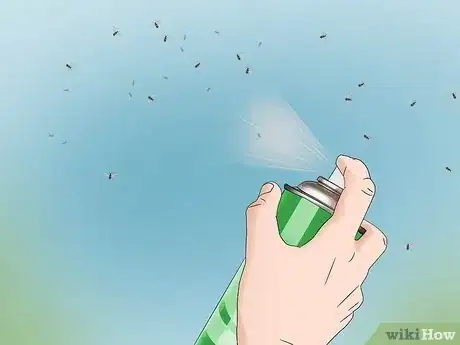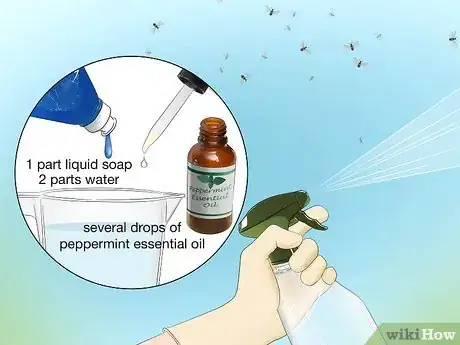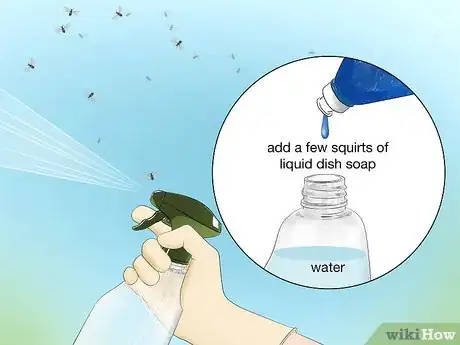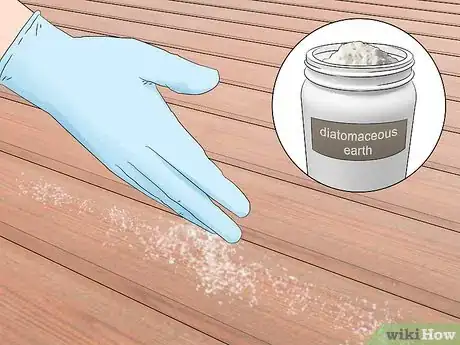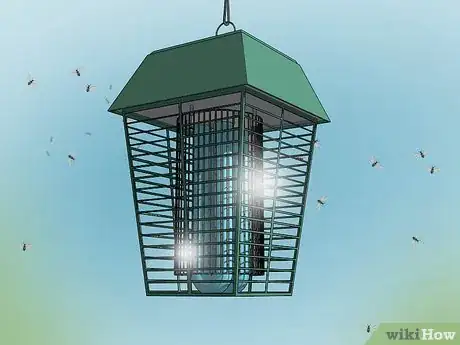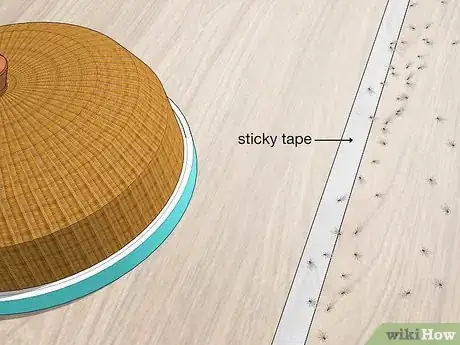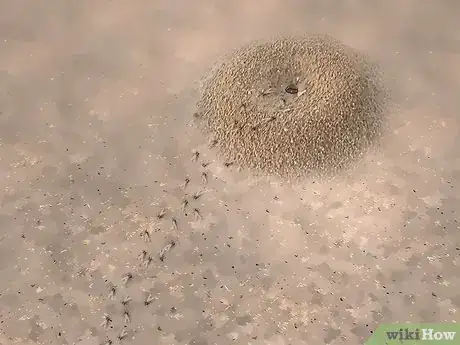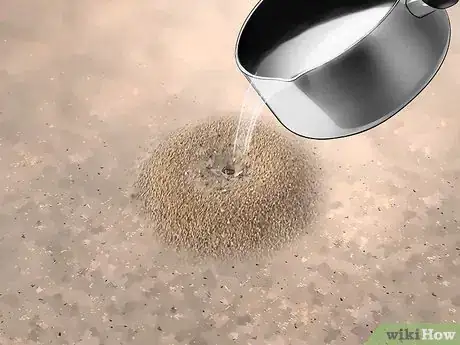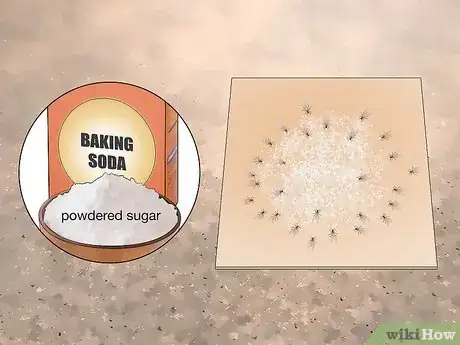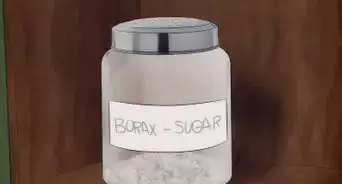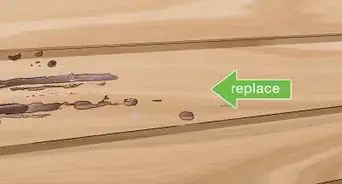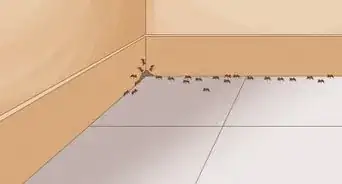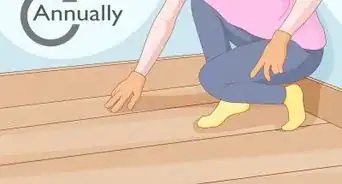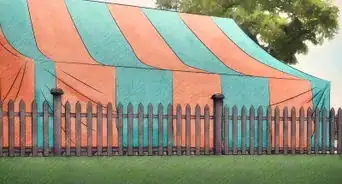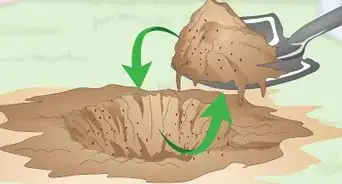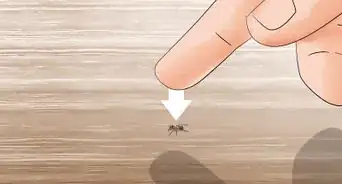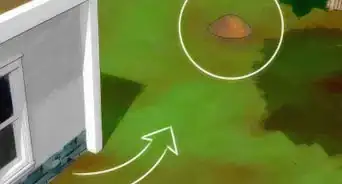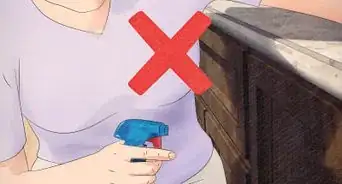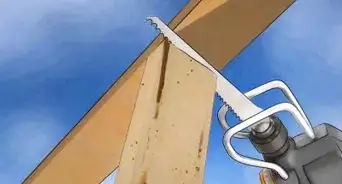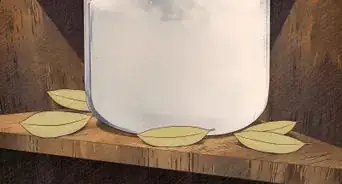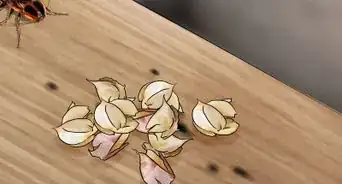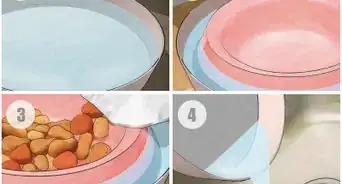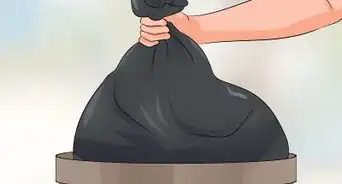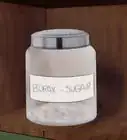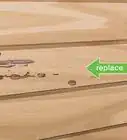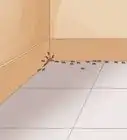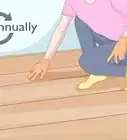wikiHow is a “wiki,” similar to Wikipedia, which means that many of our articles are co-written by multiple authors. To create this article, 11 people, some anonymous, worked to edit and improve it over time.
This article has been viewed 706,015 times.
Learn more...
Flying ants are not a separate species. These pests are actually members of other ant species, and winged varieties emerge for a brief period of time while the ants are mating. While a few flying ants spotted here or there can usually be ignored, an infestation can be a bigger problem, one which you would understandably want to kill off. You can kill flying ants on sight or by attacking the colony they come from directly.
Steps
Killing Flying Ants One by One
-
1Use a commercial aerosol. There are a variety of commercial bug poisons you can use against ants of all varieties, and any ant spray should be effective against flying ants. To get to the ants mid-flight, choose an aerosol variety with an easy-to-direct spout.
- Always follow the label instructions to prevent accidental and potentially hazardous misuse.
- Never direct aerosol poisons at any other person or animal in your household.
- Make sure that the poison you use is safe to use indoors if you plan on killing flying ants indoors.
- Be sure to verify that the aerosol you plan to use is legal in your area.[1]
-
2Make a natural peppermint spray.[2] Peppermint oil kills flying ants via suffocation. You can mix peppermint oil with water and dish soap in a spray bottle to create your own natural insecticide spray.
- Combine one part liquid soap and with two parts water in a spray bottle, then add several drops of peppermint essential oil. Mix well to combine. Spray this solution on any flying ants you see, either at rest or in flight.
Advertisement -
3Spray the ants with dish soap. Dish soap alone is effective against flying ants since it sticks to the ants' bodies and dehydrates them, causing death. To make a solution that you can easily use to attack flying ants, dilute the dish soap with water inside a standard spray bottle.
- Fill a bottle with water and add a few squirts of liquid dish soap. Mix well so that the soap is evenly distributed throughout the water. Spray winged ants in flight or at rest.
-
4Lay out some diatomaceous earth. Diatomaceous earth works against ants by causing dehydration and death. Lay a perimeter around potential food sources. If the ant steps into it, its body will be pierced by the small, jagged granules. The ant will eventually die from these wounds.
- Use food grade diatomaceous earth so that it is safer to use around kids and pets.
- Sprinkle the DE in any area you expect to find ants. The closer it is to a food source, the better, since flying ants are more likely to land at a spot directly next to the food rather than a spot further away.
- Do not wet the DE. It should be kept dry so that the sharp granules work as effectively as possible.
- Since the ants have to cross into the DE directly, there is no guarantee that it will be effective against flying ants, since flying ants might find a way to access the food source without crawling over the DE surrounding it. As a powerful ant killer, though, you may still find DE worth trying.
-
5Invest in a bug zapper. An electric bug zapper works well against many different types of flying insects, and flying ants are no exception. Hang the bug zapper in an area you typically catch flying ants in and wait for the device to take care of the problem for you.
- When hanging bug zappers, place them in open areas that insects can fly into easily. It is also important to place them out of the reach of pets or children. While the electricity produced by the bug zapper is not usually enough to cause any severe harm to larger pets, like dogs and cats, or to most children, the shock produced can still be painful.
- The bug zapper itself should lure the flying ants toward it.
- Follow the instructions carefully to avoid using the bug zapper in a potentially hazardous way.
-
6Trap ants with tape. Lay a perimeter of tape around potential food sources. When the ants land on the tape, they will get stuck and will be unable to fly away.
- In order for this to be effective, you need to place the sticky side of the tape up and position it as close to the food source as possible. Flying ants are less likely to land on the tape if it is not directly beside the food source.
- Since flying ants travel by flying instead of crawling, this treatment is not always the most effective. After all, you cannot guarantee that the flying ants will land on the tape since, technically, there is some chance that they can fly around it. Nonetheless, as a non-toxic, inexpensive option, it may still be worth a try.
Attacking the Colony
-
1Track down the nest.[3] In order to get rid of the flying ants for good, you will need to follow them back to the nest of the colony. Killing the colony of ants will provide you with a more permanent solution.
- Understand that flying ants are only the sexually active forms of an ant species. In other words, they are not a separate species of ant at all. When you find the colony flying ants belong to, it will consist of mostly wingless ants. If you want to kill the flying ants, though, you need to kill the wingless colony those ants come from.
- Try to follow ants back to the colony by observing them. If you can find the anthill they come from, you can attack the hill directly. If you are unable to find the actual nest, though, you can still attack flying ants at the source by spreading poisons that flying ants and wingless ants can take back to the colony.
-
2Use a commercial pesticide. Ant bait and other commercial poisons are effective against flying ants as long as they are labeled for use against ants in general. Look for pesticides that the ants will carry back to the nest since these will do the most damage.
- Ant baits are among the most effective ant killers, especially when you are dealing with flying ants. The ants take the bait back to the colony, where the queen consumes it and dies. After the queen dies, the rest of the colony soon follows.
- Ant baits come in the form of gels, granules, and stations.[4] Most are safe for use around pets and children, but nonetheless, you should keep them out of reach when possible.
- Note that these baits can be sugar-based or protein-based, and different bases will attract different species of ants. If one does not work, try the other.
- Always follow the instructions carefully to avoid misusing the poison in a potentially dangerous way.
-
3Create a trap of borax and sugar. Borax is highly toxic to ants, but if you mix it with something sweet, the ants will not detect the poisonous scent and will carry the sweet-smelling food back to the colony. When the queen and the rest of the colony eat the borax, the ants will die off.
- Combine equal parts borax and sugar. Slowly add water to the combination, mixing continually, until a paste develops. Spread this paste onto a piece of cardboard and place the cardboard in an area that flying ants are known to linger in. The ants should be drawn to the paste, and if it works correctly, they should take some back to the rest of the colony.
- Note that borax pastes like this tend to dry out in a few days, so you might need to make more if the first batch does not take care of the probably right away.
- Be careful when using borax around pets and small children, since it is poisonous to them, as well.
-
4Use boiling water. After you find the ant colony, pour boiling water over the anthill. Ants faced directly with the boiling water can be scalded, and the rest will likely move away from the area in response to the new threat and the damage you just inflicted.
- The water should be more than just a little hot; it needs to be boiling. Boil as much water as you can in a kettle. As soon as the water is ready, remove it from the heat and take it directly to the anthill. Douse the anthill with the water while it is still as hot as possible.
- Consider placing a flowerpot upside down over the anthill before you boil the ants out. Pour the water onto the anthill through the drain hole at the bottom of the flowerpot. Doing this traps the ants while protecting you against bites and stings issued by any escapees.
-
5Set a trap using baking soda and powdered sugar. Baking soda is another material that can kill ants. By mixing it with powdered sugar, you mask the odor and cause flying ants to take it back to the queen and to the nest. The ants that eat it will die.
- The baking soda reacts with an acidic substance ants naturally carry around inside for the sake of protection. When the baking soda mixes with this acid, a violent reaction develops and kills the ants as a result.
-
6Kill the ants with artificial sweetener. Certain types of artificial sweetener are extremely toxic to ants, yet the sweet scent is often enough to lure them in. The artificial sweetener gets carried back to the queen and to the nest, and all the ants that consume it die off.
- Aspartame, in particular, is known for acting as a neurotoxin to ants.
- Mix a little artificial sweetener with some apple juice, adding just enough apple juice to form a paste. The ants will eat some of this paste and carry some back to the rest of the colony. Once consumed there, the ant population will dwindle.
Community Q&A
-
QuestionHow can I stop flying ants from invading our house when I can't find the nest?
 Community AnswerA professional exterminator. I've tried on my own and can't get rid of them.
Community AnswerA professional exterminator. I've tried on my own and can't get rid of them. -
QuestionHow do I know if I have termites or flying ants?
 Community AnswerGoogle "the difference between..." and you can find a couple of good images, but basically, the wings of a termite are quite a bit longer than the body, the wings are all about the same length, the antennae are straight, and the body of a termite is longer and thicker. The ant has wings shorter or the same length as his body with his wings being a couple different lengths instead of all the same length, and his body is two parts, so it looks like he has a waist. Also, his antennae are bent, or elbowed.
Community AnswerGoogle "the difference between..." and you can find a couple of good images, but basically, the wings of a termite are quite a bit longer than the body, the wings are all about the same length, the antennae are straight, and the body of a termite is longer and thicker. The ant has wings shorter or the same length as his body with his wings being a couple different lengths instead of all the same length, and his body is two parts, so it looks like he has a waist. Also, his antennae are bent, or elbowed. -
QuestionHow do I prevent an infestation of winged Rogers ants in my commercial kitchen if I can't spray a treatment?
 Community AnswerLay down some natural ant killers, like peppermint oil, in small cracks and crevices. Overnight, leave a jar countaining a small amount of jelly/jam, and put it in a place near to the source of the ants where you do not mind ants crawling. The ants will become stuck fast, but more ants will enter the jar anyway. It's a fast way of catching up to 50 ants at a time without touching the colony.
Community AnswerLay down some natural ant killers, like peppermint oil, in small cracks and crevices. Overnight, leave a jar countaining a small amount of jelly/jam, and put it in a place near to the source of the ants where you do not mind ants crawling. The ants will become stuck fast, but more ants will enter the jar anyway. It's a fast way of catching up to 50 ants at a time without touching the colony.
Things You'll Need
- Aerosol poison
- Spray bottle
- Peppermint oil
- Water
- Liquid dish soap
- Diatomaceous earth
- Electric bug zapper
- Adhesive tape
- Ant bait
- Sugar
- Borax
- Artificial sweeteners
- Baking soda
- Kettle
References
About This Article
To kill flying ants, mix liquid dish soap and water in a spray bottle and spray the ants with it whenever you see them. You can also try placing some tape sticky-side up near food sources in your home, which will trap the ants when they walk over it. If you know where the flying ants' nest is, try pouring some boiling water or artificial sweetener down the entrance to the nest to kill all of the ants inside. To learn how to kill flying ants using pesticides, keep reading!
